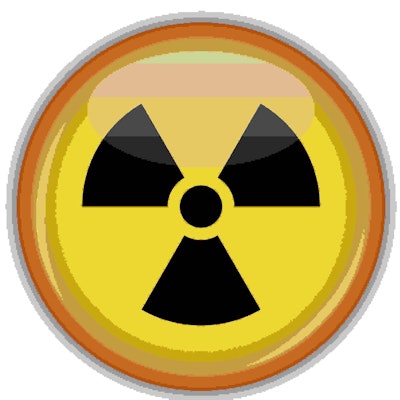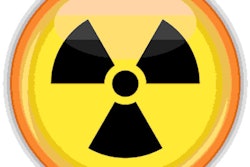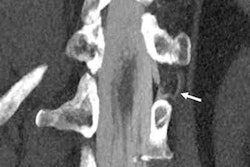
VIENNA - Did the increased use of chest CT during the COVID-19 pandemic boost radiation exposure for either radiographers or patients? Surprisingly, it appears not, according to results from two small studies presented on 15 July at ECR 2022.
In a session devoted to radiography service during the pandemic, an Australian radiographer reported on the increased use of mobile x-ray during the COVID-19 peak and its effect on staff radiation exposure, while a Portuguese researcher described how COVID-19 chest CT protocols influenced patient dose.
Phoebe Yeung of Monash Health in Melbourne presented results from research she and colleagues conducted to investigate increased use of mobile x-ray units and radiography work practice changes and the effect of these on staff radiation dose exposure during the COVID-19 pandemic. Yeung used data from between January 2019 and December 2020 taken from two hospitals' radiology departments.
The team discovered that the use of mobile x-ray during the pandemic increased 1.7-fold, with peak use in September 2020. Imaging of body areas besides chest increased over the study time period from 6% to 7.8%, the group reported. However, the researchers did not find a statistically significant corresponding boost in radiation dose exposure for radiographers.
"There was a substantial increase in the utilization of mobile x-rays following the COVID-19 pandemic," Yeung noted. "Additionally, mobile x-ray work practices evolved to reduce infection transmission risk, such as imaging patients in isolation rooms. [But] despite the increase in the utilization of mobile radiography, there was no statistically significant increase in radiation exposure to radiographers during the COVID-19 pandemic."
In a related presentation, Margarida Ribeiro, PhD, of Universidade Nova de Lisboa in Portugal explored chest CT protocols during the pandemic and their influence on patient radiation exposure. She and colleagues examined chest CT protocols used in five hospitals for 25 patients, tracking parameters that impact the exam's CT dose index volume (CTDIvol) and dose length product, or DLP (thickness, pitch, kV, mA, time rotation, and gap).
Ribeiro's group found no statistically significant differences among the five COVID-19 chest CT protocols in the evaluation of effective dose measured in mSv, although there was a range of doses across the five hospitals (2.94 mSv to 6.68 mSv). She reported that the lowest dose chest CT protocol resulted in an 89% reduction in radiation exposure without negative affect on diagnostic accuracy.
| Comparison of chest CT protocol performance across 5 Portuguese hospitals | |||||
| Measure | Hospital A | Hospital B | Hospital C | Hospital D | Hospital E |
| Mean DLP | 445.68 | 209.80 | 476.85 | 317.39 | 252.74 |
| Effective dose | 6.24 | 2.94 | 6.68 | 4.44 | 3.88 |
| Cumulative dose | 1.35 | 0.59 | 1.34 | 0.89 | 0.67 |
The findings highlight the need for further chest CT protocol development in a pandemic era, according to Ribeiro.
"[Our research shows that], in addition to the adjustments made, there is space for a more rigorous optimization adapted to this new clinical situation," she noted.











